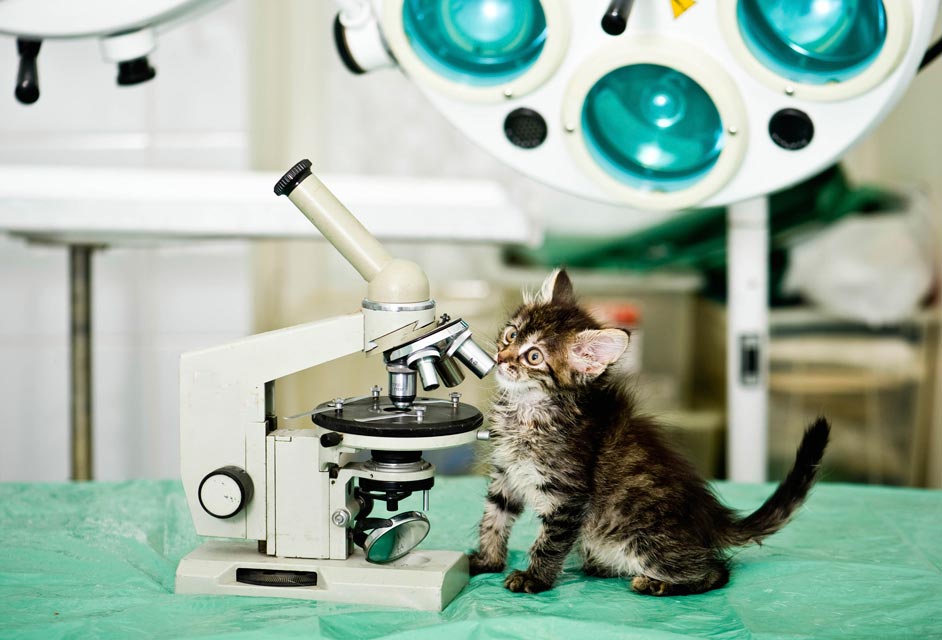Skin Cytology in Cats

Skin cytology is a non-invasive procedure which allows a veterinarian to test a cat's skin for the presence of various organisms and cell types to aid in the diagnosis of dermatologic conditions. In other words, if your cat is showing signs of a skin condition, your vet might do a skin cytology as part of a complete physical exam to help diagnose the problem.
Some of the signs of skin problems in cats include:
- Pulling out hair
- Licking or biting incessantly at an area of the body
- Redness, inflammation, or bumps on the skin
How Is a Feline Skin Cytology Performed?
When your veterinarian wants to perform a skin cytology test on your cat, he or she will probably use a cotton swab rolled firmly across an affected area of the skin multiple times. Then, the doctor will roll that swab several times across a microscope slide. The slide may then be heat fixed and stained so the veterinarian can observe it under a microscope.
What Can a Skin Cytology Tell Your Veterinarian?
Most of the time, when a veterinarian performs a skin cytology, he or she is concerned about an infection going on. Various types of bacteria, as well as yeast species, can be observed under a microscope on a skin cytology sample. Also, different types of white blood cells can be identified in a skin cytology, and that will also give the veterinarian valuable information concerning various inflammatory conditions that can affect a cat's skin.
A skin cytology is one of the tools in a veterinarian's arsenal to help diagnose a skin problem in your cat. He or she will also take a thorough history from you, do a complete physical examination, and may perform other skin tests such as:
You May Also Like These Articles:
Skin Culture and Sensitivity Testing in Cats
Common Causes of Ear Problems in Cats
Skin Scraping: An Easy Diagnostic Test for Feline Skin Problems
Why Does My Cat Pull His Hair Out?
Why Does My Cat Arch Her Back?
Notice: Ask-a-Vet is an affiliated service for those who wish to speak with a veterinary professional about their pet's specific condition. Initially, a bot will ask questions to determine the general nature of your concern. Then, you will be transferred to a human. There is a charge for the service if you choose to connect to a veterinarian. Ask-a-Vet is not manned by the staff or owners of CatHealth.com, and the advice given should not delay or replace a visit to your veterinarian.



